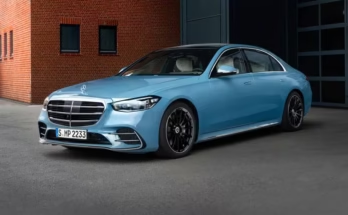Boxcars: A Comprehensive Overview of Their Role in Freight Transportation
Boxcars have long been a cornerstone of freight rail transport, offering versatility and protection for a wide variety of goods. Despite facing competition from intermodal shipping containers and other specialized railcars, boxcars continue to serve as essential tools for industries that require secure and weatherproof transportation. This article explores what boxcars are, their uses, benefits, challenges, and their evolving role in modern freight logistics.
What Are Boxcars?
A boxcar is a type of railcar with a fully enclosed design, providing a weatherproof and secure environment for transporting goods. Its name comes from its rectangular, box-like shape. Boxcars are built with sliding or plug doors for loading and unloading and are available in a range of sizes to accommodate different types of cargo.
Typical Features of Boxcars:
- Dimensions: Standard boxcars are usually 50–60 feet long and 9–10 feet high. High-cube boxcars, designed for lightweight but bulky cargo, exceed standard dimensions.
- Load Capacity: Most boxcars can handle between 70 and 100 tons of freight.
- Enclosed Design: Protects goods from exposure to weather, debris, and theft.
Uses of Boxcars
Boxcars are among the most versatile types of freight railcars. Their enclosed structure makes them ideal for transporting goods that need protection from environmental elements or require added security. Here are some of their primary applications:
- General Freight:
Boxcars are frequently used to transport a wide variety of packaged goods, such as furniture, appliances, and electronics. These items are loaded onto pallets or into crates and secured inside the boxcar. - Food Products:
Non-perishable food items such as canned goods, boxed foods, and grains are often transported in boxcars. Specialized refrigerated boxcars, known as reefers, are used for perishable items like produce, dairy, or meat that require temperature control. - Paper and Cardboard Products:
Industries producing rolls of paper or stacks of cardboard rely on boxcars due to their flat, stable floors, which allow for secure stacking and easy transportation. - Smaller Bulk Items:
Though boxcars are not designed for loose bulk materials like coal or gravel, they can carry smaller bulk goods in bags or sacks, such as seeds, flour, or animal feed.
Advantages of Boxcars
Boxcars remain an important part of freight rail transport due to their unique benefits:
- Weather Protection:
The enclosed structure shields cargo from rain, snow, wind, and sunlight, making boxcars essential for weather-sensitive goods. - Security:
Boxcars offer protection from theft and damage, which is particularly important for high-value items like electronics or pharmaceuticals. - Versatility:
Unlike more specialized railcars, boxcars can transport a wide range of goods, providing flexibility for shippers. - Cost Efficiency:
Boxcars can handle large volumes of freight, reducing transportation costs for medium- to high-value goods. - Durability:
Boxcars are built to withstand heavy use and can last for decades with proper maintenance.
Limitations of Boxcars
Despite their versatility, boxcars have certain drawbacks that limit their efficiency in some scenarios:
- Loading and Unloading Challenges:
Unlike flatcars or intermodal containers, boxcars only have side doors for access. This makes loading and unloading more labor-intensive, often requiring forklifts or pallet jacks. - Space Utilization:
Oddly shaped or oversized items may not fit efficiently within a boxcar’s enclosed space, reducing its utility for such cargo. - Decline in Demand:
The rise of intermodal containers, which can seamlessly transition between trucks, ships, and trains, has decreased the reliance on boxcars for some types of freight. - Maintenance Costs:
The complex mechanical doors and enclosed design require regular maintenance, adding to operational expenses.
Specialized Boxcars
To address specific shipping needs, specialized types of boxcars have been developed:
- Refrigerated Boxcars (Reefers):
These are equipped with temperature control systems to safely transport perishable goods like fruits, vegetables, dairy products, and frozen foods. - High-Cube Boxcars:
Designed for lightweight but bulky items, these boxcars have extra height and capacity to accommodate goods such as large rolls of paper or empty plastic bottles. - Plug-Door Boxcars:
These have tighter seals than standard sliding-door boxcars, making them ideal for sensitive cargo like chemicals or electronics that require enhanced protection from environmental factors.
The Modern Role of Boxcars
While boxcars were once the backbone of rail freight transportation, their role has shifted due to advancements in logistics. The rise of intermodal shipping has reduced their dominance, as intermodal containers are more versatile for global supply chains. However, boxcars remain crucial for industries that require:
- Secure and weatherproof transportation.
- Specialized handling for specific goods, such as temperature-sensitive food or paper products.
Railroads continue to invest in modernizing boxcars with updated designs, improved seals, and lighter materials to enhance their efficiency and appeal.
Conclusion
Boxcars may not be as prominent as they once were, but their versatility, security, and protective design ensure they continue to play a vital role in freight transportation. They excel in transporting general freight, food products, and other goods that need protection from the elements. While their limitations have led to a decline in some sectors, ongoing innovation keeps boxcars relevant in modern logistics.
For industries requiring reliable and efficient transport of protected goods, boxcars remain an essential component of the rail freight system.




